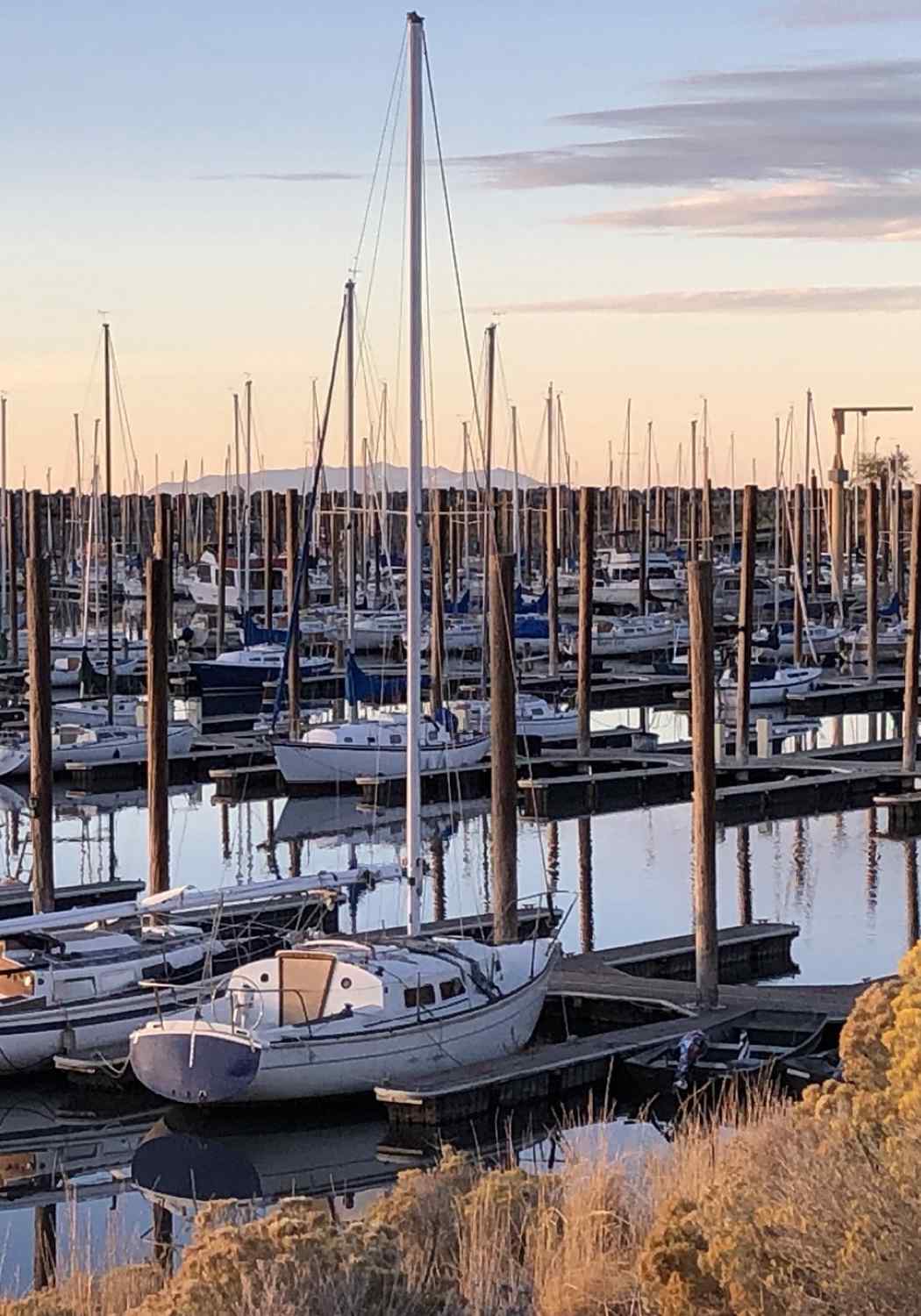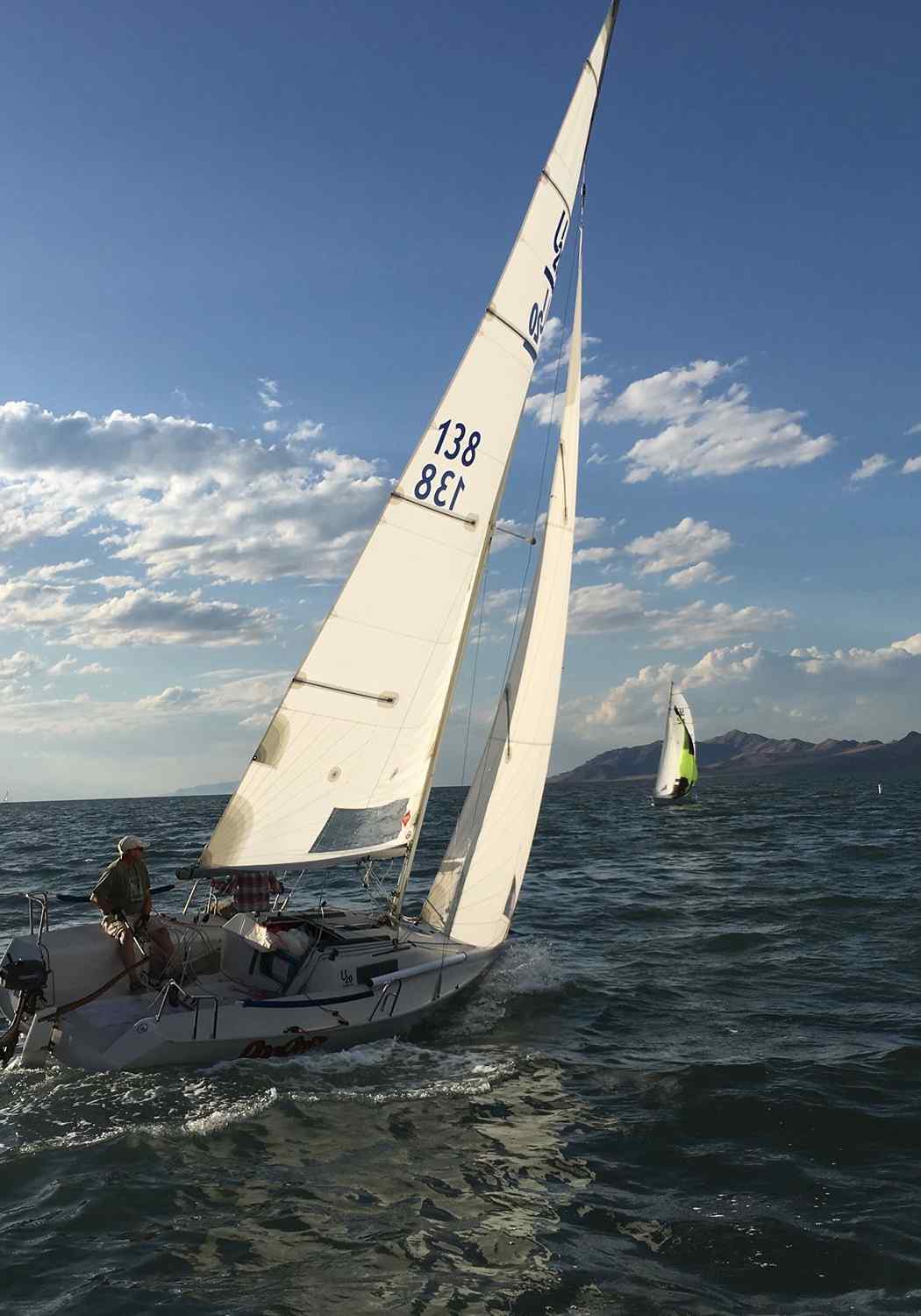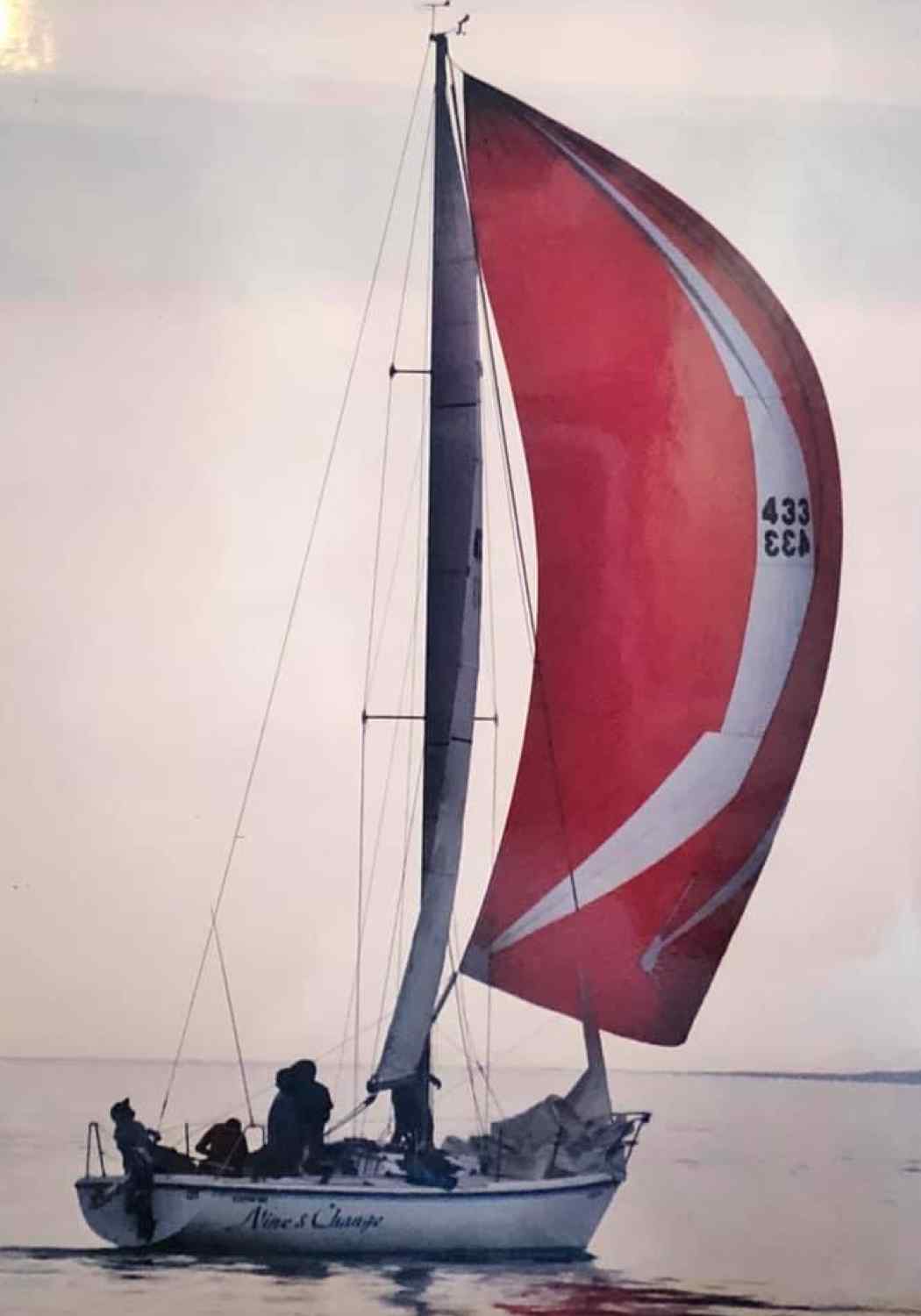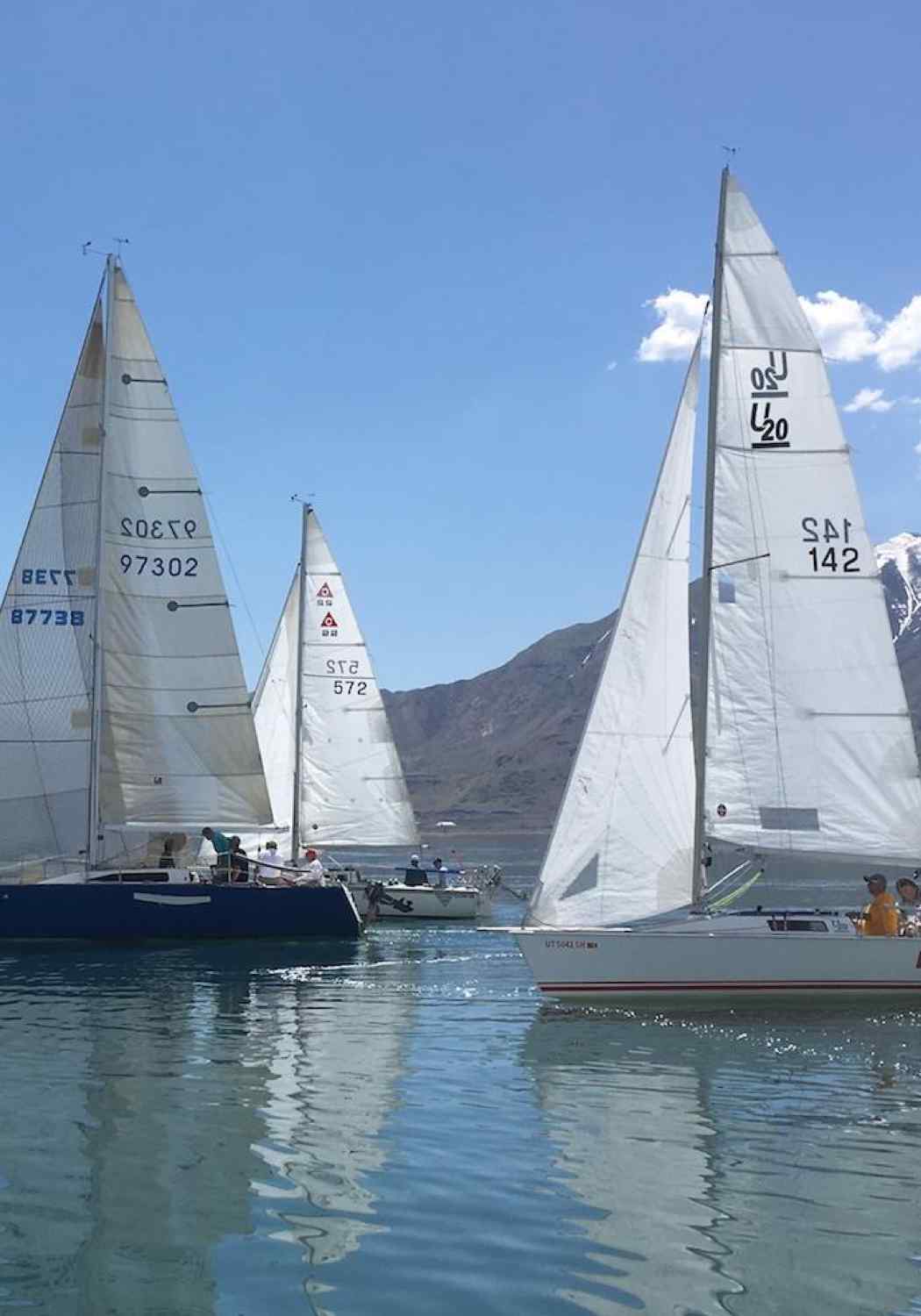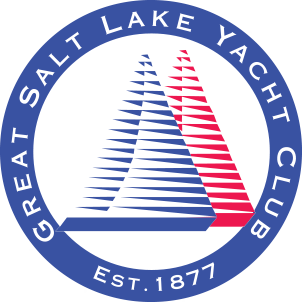
Yacht Club
GREAT SALT LAKE YACHT CLUB
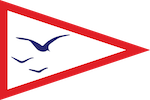
Resources
RESOURCES
MARINA CONDITIONS
Check out the latest forecasts and conditions at the Great Salt Lake Marina, with data provided by Wind Finder.
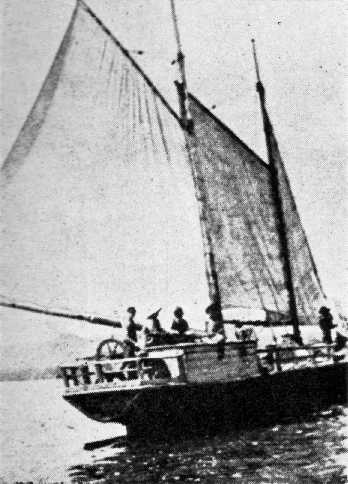
Lady of the Lake
History
CLUB HISTORY
The Great Salt Lake Yacht Club was originally established on May 10, 1877 with Captain David Lazarus Davis as Commodore. Members included all crew of the vessels: “Waterwitch”, “Petrel”, “Mary Askey”, and an unnamed boat belonging to a Mr. Hudson.
Throughout its history, the club has ebbed and flowed along with the level of the lake, experiencing the record highs of the 1980s to the lower water levels of recent years. Today, there are about 300 slips with facilities operated by the Utah State Parks Department, as the marina itself is in the state park.
Updates
News & Updates
Questions
QUESTIONS
The level of the lake fluctuates, but at normal levels (4200 ft MSL) the average depth is 15 feet. The maximum depth is about 31 feet. In recent history the lake level has varied from 4191 to 4212 feet MSL. The current lake level can be found on the USGS website.
There are few hazards to navigation in the main body of the lake, except there is a relative shallow reef at the harbor mouth. This usually doesn’t present a problem except in shallow water years for deep draft boats. Currently one should sail out using the marked Deep Channel.
It is advisable to get a navigation chart before venturing too far into the lake. These charts are available from the Great Salt Lake Yacht Club.
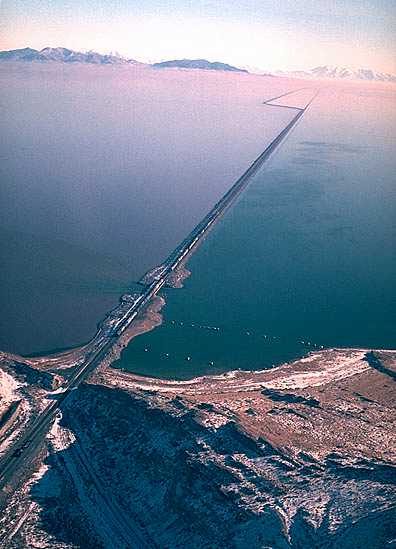
The lake is about 75 miles long and about 45 miles wide. However, the lake is divided into halves by a railroad causeway. The south arm on the right side (Gilbert Bay) is the most used portion of the lake because the north arm (Gunnison Bay) on the left side is quite desolate.
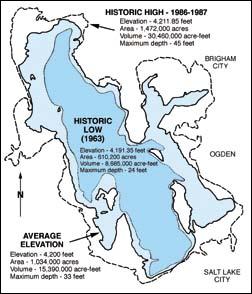
The lake’s surface area varies quite drastically as its elevation changes. In 1986, the lake reached a historical high an of 4,212 feet. At that time, the lake expanded to cover about 3,300 square miles. Lake levels hit their historic low in 1963, when the surface stood at 4,191 feet in elevation and covered 950 square miles. As of June 2003, the lake is at about 4,197 feet and covers about 1,200 square miles.
Salinity varies inversely as the lake level. As the lake rises (more fresh water) the salinity drops. Because the south arm receives all of the fresh water, and since the causeway (see How Big?) prevents adequate circulation, the south arm is less saline (currently about 9%) than the north arm (currently about 25%).
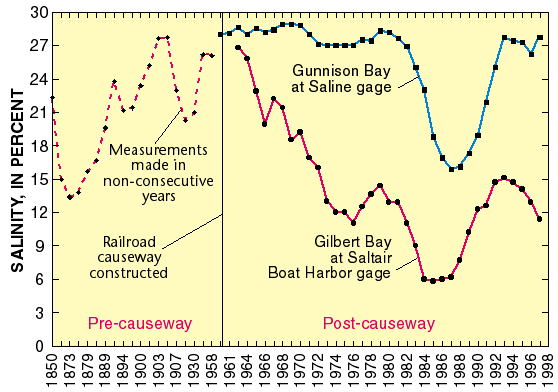
The saturation point of salinity is around 25%, so the north arm is now saturated, and the south arm is getting fresher. This is not good because it will eventually change the entire GSL ecosystem. This imbalance is visible in the causeway photograph where the water north of the causeway is noticeably red due to the bacteria concentration in the super saturated water.
Normally all that is required for inboard engines is regular zinc replacement to prevent galvanic corrosion. It is wise to flush outboard engines after each use.
As far as topside care, sails and hardware, the normal marine environment precautions are recommended, i.e. rinse off salty sails, and flush hardware with fresh water after use.
The only living thing (in any abundance) in the lake are brine shrimp and algae. The shrimp feed on the algae, so both the shrimp and algae populations are cyclical.
Most folks use bottom paint to prevent algae growth. Left unchecked, the algae can get quite thick, but can be removed with a good scrubbing. Almost any bottom paint will do. Your choice should be determined by your intended use (like racing, for example).
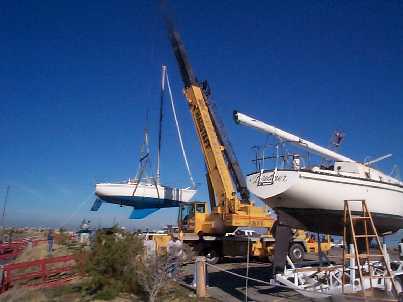
We do not have haul out facilities at the lake but we do have many “crane days” scheduled throughout the season. A crane is hired, and the cost is shared among the users. Crane days are major “events” with a lot of participation, and people help one another out.
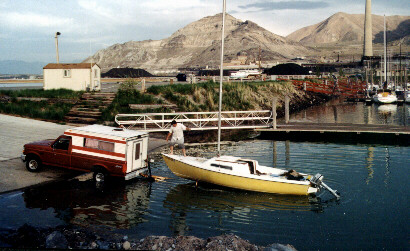
For smaller boats (and for those with an adventurous spirit) there is a good launch ramp. After launching or hauling out, the trailer must be thoroughly washed to prevent corrosion.
Join Us
JOIN THE CLUB
